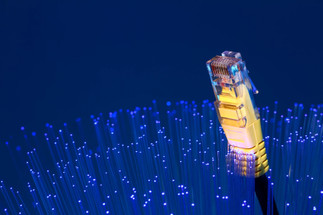Posted by Josh Elijah on 21st Feb 2022
What is the maximum practical length for Single Pair Ethernet (1000BASE-T1)?
What is 1000BASE-T1?
There are many informational explanations on the theory behind 1000BASE-T1 (GigaBit Single Pair Ethernet), but this page is meant to be a practical exploration rather than a deep dive in the theory. However it is necessary to understand some key points about how 1000BASE-T1 works before we begin.
1000BASE-T1 achieves gigabit ethernet speeds on a single pair of wires, rather than on four pairs of wires (as is the case with 1000BASE-T). It achieves this through a number of strategies.
- A 333.33MHz clock frequency with a PAM3 (3 level) encoding. This allows a data rate of 333.33M x 3 bit levels = 1000Mbits. (Note, the clock frequency for standard four-pair ethernet is 125MHz).
- A master and slave based topology with echo-cancellation. This allows both nodes to send 1000Mbps on the same media.
The image below shows a real world 1000BASE-T1 signal, showing the clock rate and three-state levels.
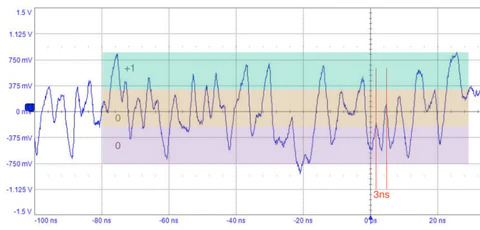
The tradeoff with 1000BASE-T1 is the reduced cable length and reduced immunity to physical channel quality (cable impedance mismatch, etc).
The benefits are a 4x reduction in cabling and more compact circuitry. BoM cost is roughly flat but this may change as SPE PHYs reduce in cost. As such, 1000BASE-T1 should only be used where these benefits are worth the reduced cable length.
So what is the maximum transmission length?
According to the IEEE specification (IEEE 802.3bp) and at the time of writing (early 2022), the maximum distance is 40 meters on unshielded twisted pair. That said, there is currently work to extend this to 100 meters, with chip manufacturers upgrading their offering to achieve this.
This answer is not very useful however. The real question is, what kind of range can I achieve right now, with a real world, off-the-shelf piece of hardware?
Well, it depends on a huge range of factors like cable type, the specific chip used etc. To really get a feel for this, let's take the BotBlox SPEBlox (1000BASE-T to 1000BASE-T1 converter). This is a real world product that approximates the practical current state of the technology.
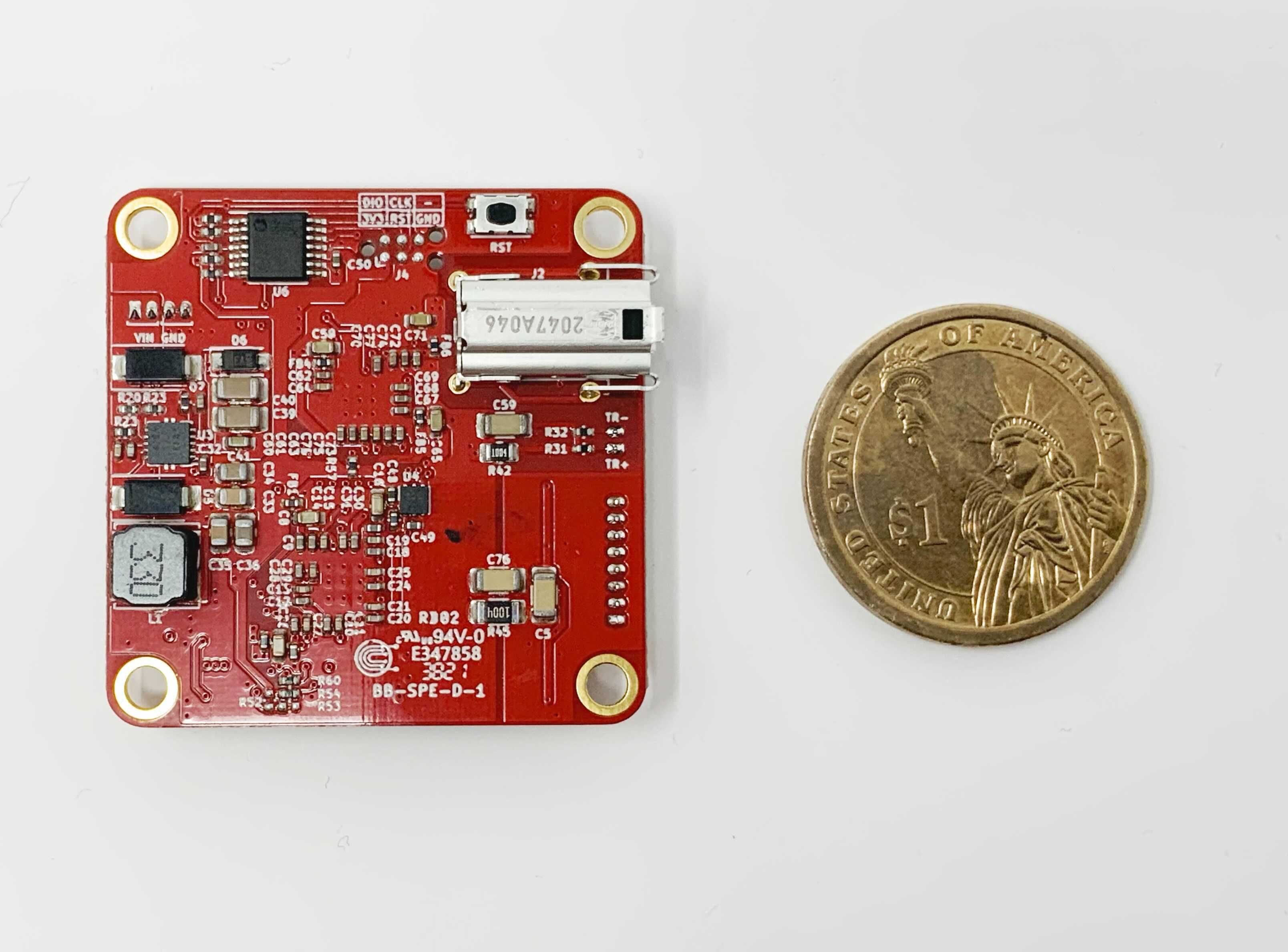
If you want the short answer, the maximum practically achievable cable range using 1000BASE-T1 is around 20 meters. If you want the long answer, read on for our tests.
Practical tests
For our practical tests, we setup two SPEBlox, each connected to a Raspberry Pi 4 running iperf3 networking tests. This allows us to pump data into the standard gigabit ethernet port on each SPEBlox.
We then use cables of varying lengths to connect the single pair ethernet ports on each SPEBlox together.
If the two RPis can see each other on the network, then we perform an iperf test to test the maximum data rate. In general, data rates above 900Mbps are a pass, while data rates below this, no link detected, are a fail.
Test 1: 0.1 meter 28AWG twisted pair cable, PicoBlade to PicoBlade
Cable used
28AWG UL1061, unshielded twisted pair with PicoBlade connectors

Test setup
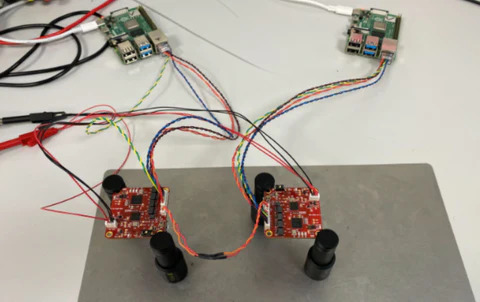
Result
Average data rate over 30s = 911Mbps
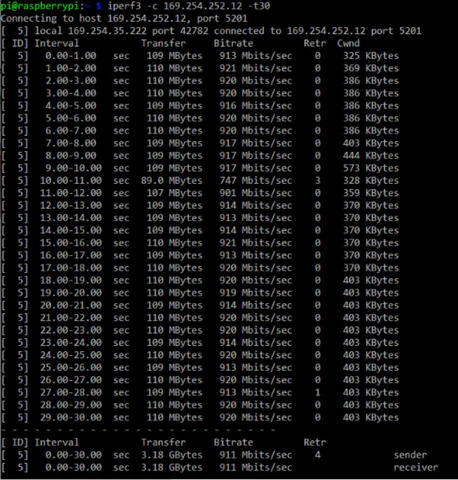
Link pulse at end of cable
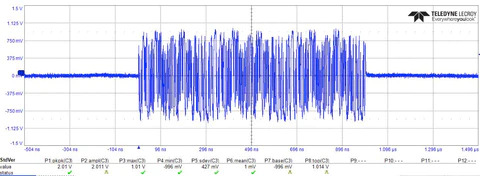
A peak to peak value of 2.01V at the end of the cable. This will be our 0dB reference.
Test 2: 11 meter 24AWG CAT6 single twisted pair cable, PicoBlade to PicoBlade
Cable used
"Homebrew" 11 meter 24AWG CAT6 single pair. This cable was made by taking apart a 5.5 meter CAT6 cable, and splicing together two of the single pairs to make an 11 meter cable.
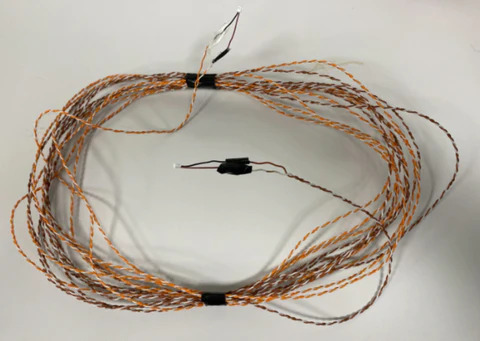
Test setup
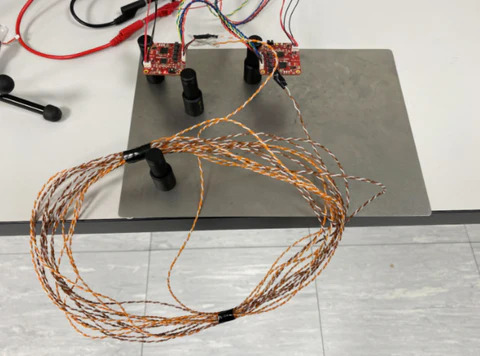
Result
Average data rate over 30s = 919Mbps
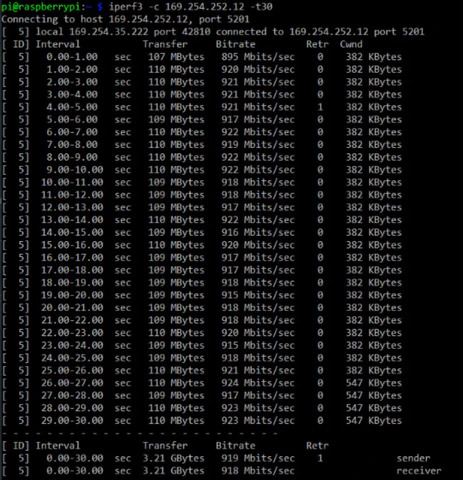
Link pulse at end of cable
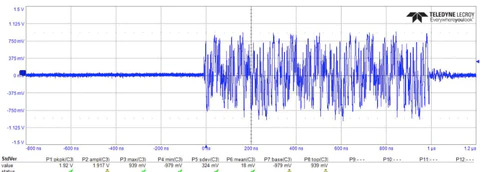
A peak to peak value of 1.92V at the end of the cable, -0.39dB from the reference 0.1m cable.
Test 3: 22 meter 24AWG CAT6 single twisted pair cable, PicoBlade to PicoBlade
Cable used
"Homebrew" 22 meter 24AWG CAT6 single pair. This cable was made by taking apart a 5.5 meter CAT6 cable, and splicing together four of the single pairs to make an 22 meter cable.
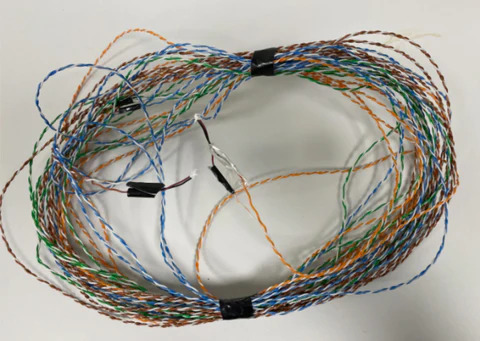
Test setup
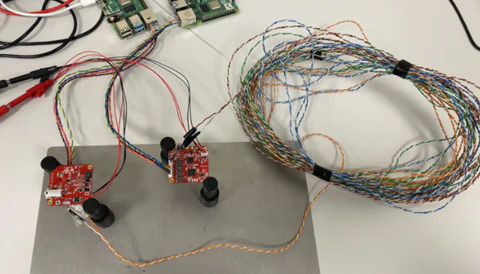
Result
Average data rate over 30s = 912Mbps
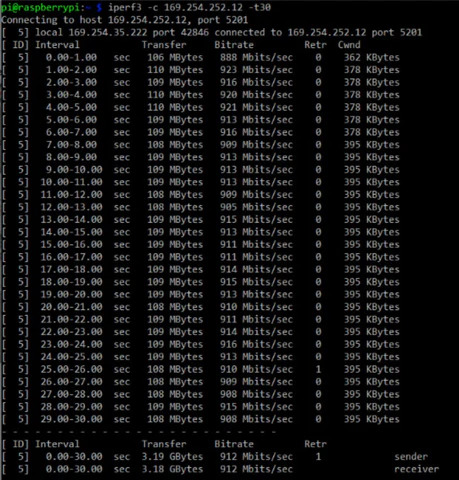
Link pulse at end of cable
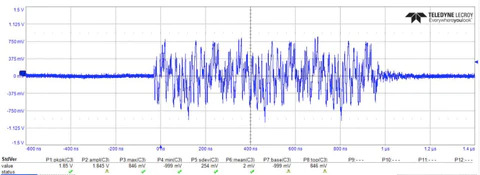
A peak to peak value of 1.85V at the end of the cable, -0.720dB from the reference 0.1m cable.
Test 4: 44 meter 24AWG CAT6 single twisted pair cable, PicoBlade to PicoBlade
Cable used
"Homebrew" 44 meter 24AWG CAT6 single pair. This cable was made by taking apart a 5.5 meter CAT6 cable, and splicing together eight of the single pairs to make an 44 meter cable.
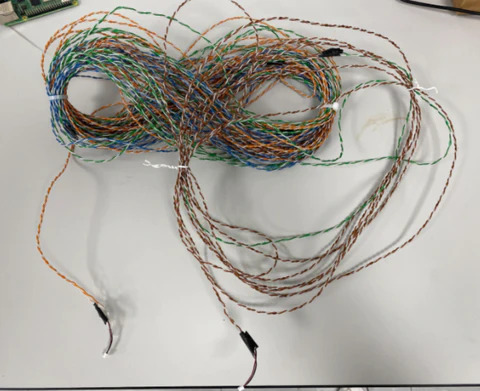
Test setup
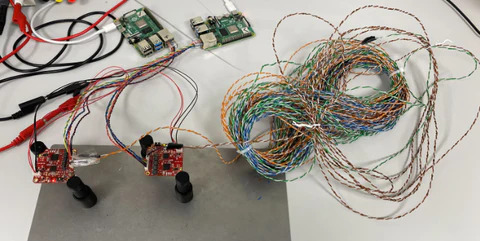
Result
No link.
Link pulse at end of cable
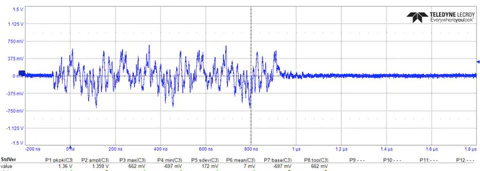
A peak to peak value of 1.36V at the end of the cable, --3.39dB from the reference 0.1m cable.
Test 5: 10 meter 28AWG shielded single twisted pair cable, PicoBlade to PicoBlade
Cable used
10 meter 24AWG shielded single pair (MPN: 5471C SL005) with PicoBlade connectors.
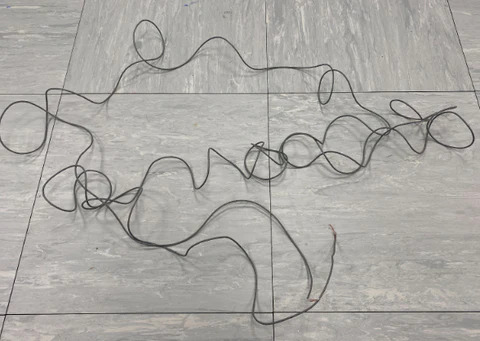
Test setup
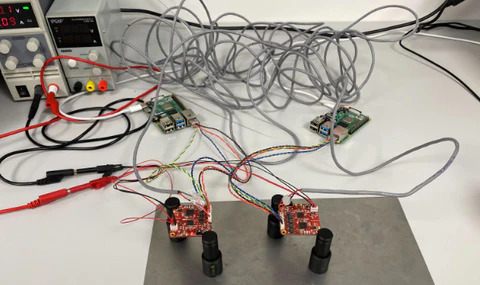
Result
Average data rate over 30s = 936Mbps
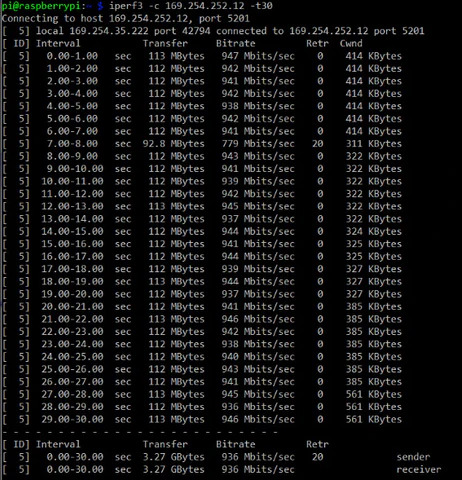
Link pulse at end of cable
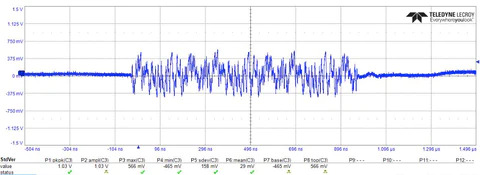
A peak to peak value of 1.03V at the end of the cable, -5.807183582046531 dB from the reference 0.1m cable.
Conclusion
Our tests show that we can achieve around 22 meters on a CAT6 single pair. This seems to correlate fairly well with the information we received from our chip manufacturer (Texas Instruments), who suggest that the chip we use (the DP83TG720S-Q1) is meant for automotive cable reaches of 15 meters.
One interesting finding is that whether a link appears or not appears to not to correlate directly to voltage loss. Our 44 meter CAT6 cable had a lower signal loss than our 10 meter shielded cable, however the 44 meter cable did not establish a link. This could have been due to the "homebrew" nature of the cable, with 10 soldered wire splice locations potentially causing reflections that messed with the signal.
In general, we would posit that 20 meters on CAT6 is currently achievable with SPEBlox, and this is probably about right for most 1000BASE-T1 hardware on the market.
By no means is this a comprehensive test. We haven't explored the effect of shielding, or other types of cable, but hopefully this practical exploration should give the reader a good "feeling" for practically achievable distances with a "typical" single pair ethernet 1000BASE-T1 setup.
September 2022 Edit
After speaking with some folks deeply involved in the development of IEEE 802.3bp, we have learnt that chip manufacturers are currently no longer working on 1000BASE-T1 PHYs capable of ranges up to 100 meters. The reasoning behind this is that to achieve 100 meters range would involve a huge amount of complexity, latency of coding, cost and power and it wouldn't be a particularly reliable link anyway.

